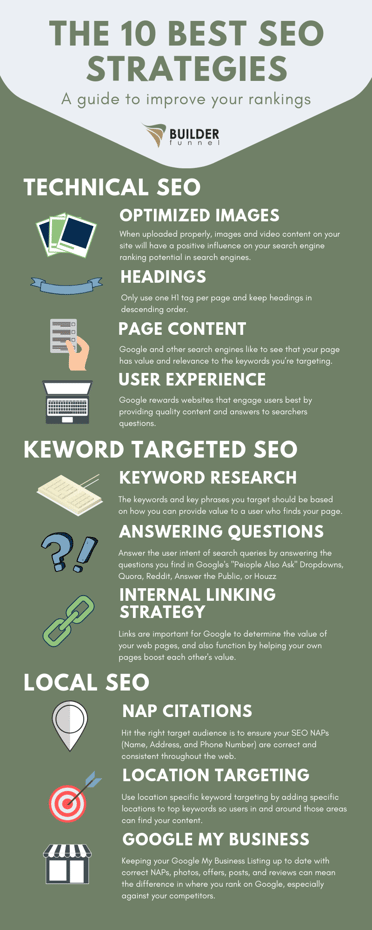 SEO for Contractors, Home Builders & Remodelers
SEO for Contractors, Home Builders & RemodelersBuilding your website and website pages is like building a digital house. The structure needs to be a quality building if it’s going to meet the needs of the owner. The website needs to have a variety of pages that work together in the same way a house’s rooms work together to create a physical space that has a sense of functionality. As with a house, your “digital house” should look good and function properly based on the goals of your business. Similarly, you want your house and your “digital house” to be a place where guests feel at home—where their needs are met—so that they’ll come back regularly.
It’s important for your business to take advantage of the internet and use the tricks of the trade to take your home building or remodeling company to the next level. Invest the time into better SEO practices to help your business thrive in the age of digital media. Continue reading for a better understanding of what SEO is, why it matters, and how to implement it.
SEO is an acronym for Search Engine Optimization and is the general term used when exploring ranking factors on search engines such as Google, Bing and Yahoo. When thinking about SEO for your website, it is the practice of making updates and changes to your site to increase its visibility and readability to search engines. This practice also increases your ranking in organic search results, which means more users will see your website listed in organic search results when they search for key terms that are related to the content on your website.
As the world shifts toward digital buying platforms, SEO is more important than ever before and will continue to grow in importance as consumers continue to use the internet for researching, evaluating, and purchasing products and services. SEO is especially important for remodelers and home builders because their product and service is often a large buying decision, so consumers do research online before ever talking to a sales representative. They look for remodelers near them, photos and videos on remodeler websites, and visit social media sites of potential builders. If you’re not answering the questions consumers are asking, you’re losing qualified leads who are already interested in the home building or remodeling process.
When talking about search rankings for home builders and remodelers, there are three main buckets of SEO that need to be implemented: Technical SEO, Keyword Targeted SEO, and Local SEO.
If your site’s load time is too slow, or the readability of your pages aren’t up to par, search engines are going to ignore your page. Optimizing your technical and on page SEO are ways to keep your site relevant, and here’s how:
Harness the potential of your images. As a home builder or remodeler, your product and services speak best through pictures. And that means that your site will have a lot of them!
When uploaded properly, images and video content on your site will have a positive influence on your search engine ranking potential in search engines. But when done in haste and without intentional thought, these same images can cause numerous errors that search engine crawlers will “ding” your site for.
Photos from professional grade cameras are typically upwards of 4000px wide, but if you upload hundreds of beautiful portfolio images and home model images to your site at this size, it will take AGES for your page to load. Ideally, your pages should load in under 3 seconds, otherwise we impatient humans will simply abandon the page and find something else that loads more quickly. In fact, 40% of users will abandon a page that does not load in under 3 seconds.
You can resize images in a variety of programs; it doesn’t have to be anything fancy. The generic photo editing program on your PC or Mac (like Paint) will be able to accomplish this task with no problem.
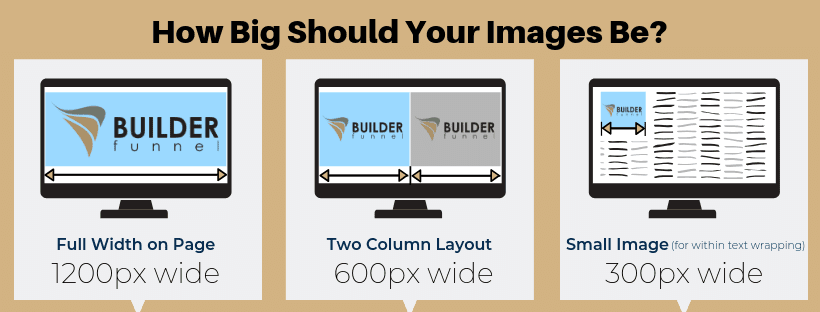
After resizing your images, it is time to rid them of the unnecessary metadata that is stored in the file. You can do this by merely dragging and dropping the file(s) into an image compression program. My go-to’s are www.ILoveImg.com www.TinyPNG.com and www.ResizeImage.net.
The goal is to get your file size to be less than 100kb large. This is harder to do for images that are 1200px wide, but it is still what you should be shooting for. Often you can run your compressed image through the image compressor a second time and shave off a little bit more from the file size without losing image quality.
We have one more step until we can upload the image to the website.
Image titles like “IMG_0054” are SO COMMON on sites that have a lot of images because it just doesn’t seem worth it or relevant to rename every single image. BUT I promise it is worth it because the SEO items that move the needle most are the detailed ones. When a search engine crawler reads the HTML of your site, they read the title and alt text associated with your images (and videos) and use that information to further determine what the page is about.
Renaming your images to the associated service and your location before uploading them to your site increases its search engine ranking potential because the image’s URL will have relevant keywords that search engine crawlers can use to populate your image for relevant search results.
Not taking the time to rename images and include image alt text is the #1 missed opportunity for targeting keywords and key phrases with the images on your website. So when you upload an image to your website (after already renaming it), be sure to set the alt text to be an even more descriptive explanation of the image than your already descriptive, SEO optimized image title. This way, if the image does not load, the alt text will display on the page and tell users what type of image was supposed to display.
The alt text still doesn’t have to be much, but something that describes the picture, includes your target services location, and includes the service type will help improve your technical SEO. Here are some examples:

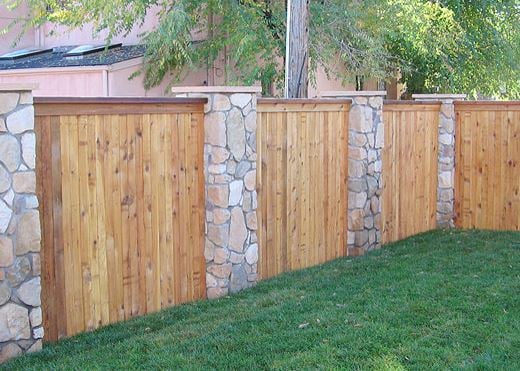
"Light cedar fence with brick accents by Split Rail Fence in Denver"
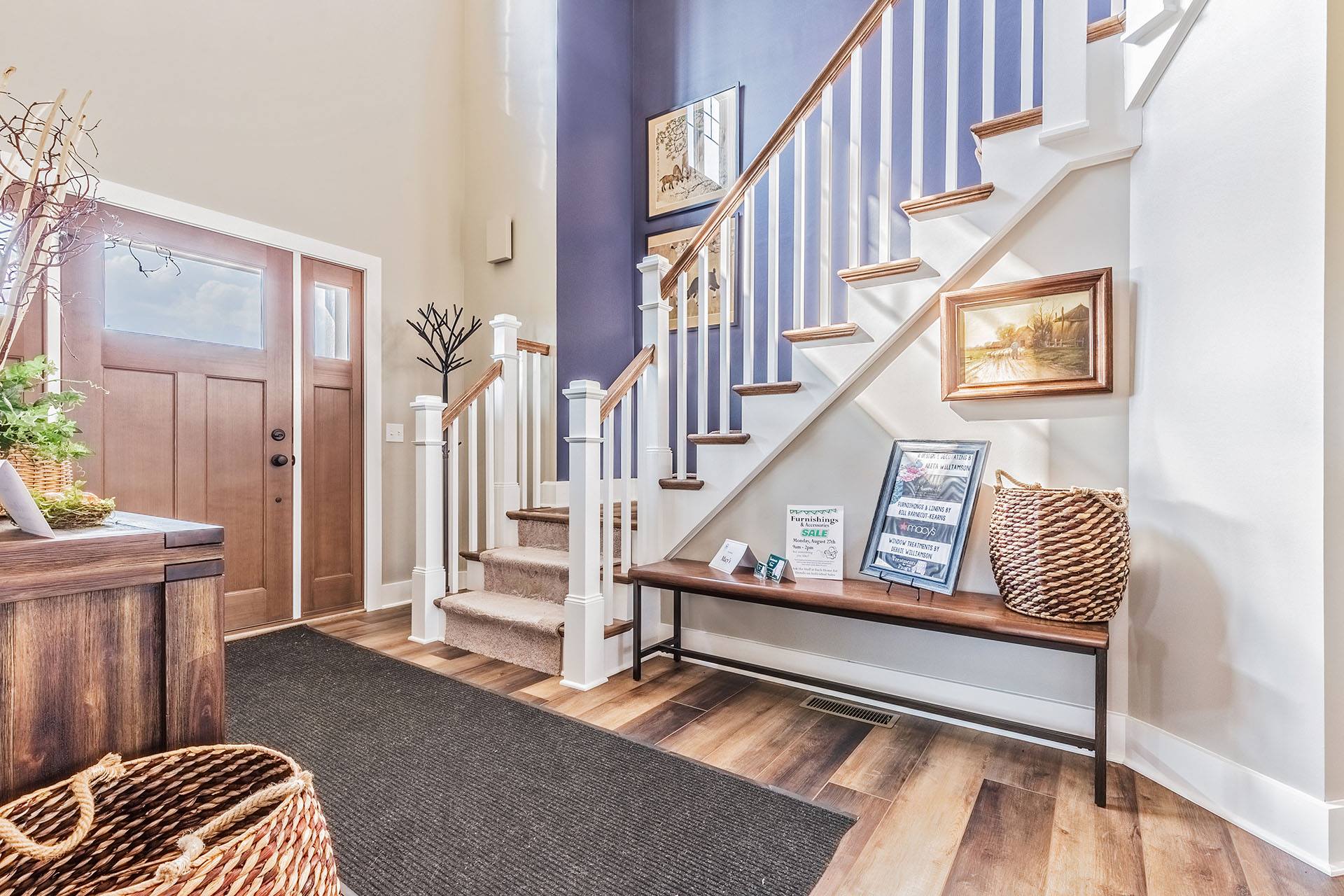
Writing alt text in these ways ensures you meet the following criteria:
Provides content that Screen Readers use to help the blind and visually impaired interact with websites.
Explains what is in the picture so if the picture doesn’t load for some reason, users are able to see what kind of picture is being shown.
Targets the location of and services provided by your business in a smooth way.
Provides search engine crawlers content to use when populating image search results.
All of that to say, please please please write user and search engine optimized alt text on ALL of your images.
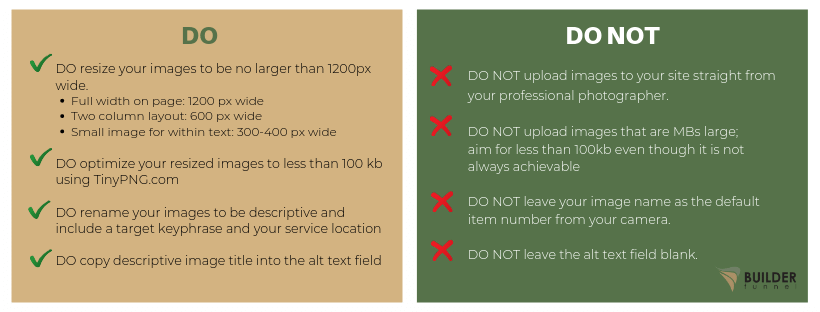
And if you’ve been debating whether or not to hire a professional photographer, the answer is yes. Onward to heading structure!
Dividing your content into sections and keeping a proper heading structure are great ways to make your content more readable for search crawlers and your web visitors alike.
Some general rules of thumb when it comes to using H tags and P tags (headings and paragraph denotations in your website pages, blogs, and landing pages) are:
Your Heading 1 (H1) tag is the title of your blog or main topic of your website page. This is the primary heading that search engines will use to determine what your page is about. If you have multiple H1 tags, your topics are competing on the page and the search engine crawlers will not connect the content on your page together.
Headings should always descend in order and not skip a heading level, but can skip when they are ascending. For example:
Good
Bad
H1
--H2
--H2
----H3
--------H4
--H2
H1
----H3
H2
H4
H2
-----H4
Home Building
-- Cost of Building a New Home
-- Mistakes to Avoid
----Tips for Hiring the Right Contractor
--------Do your Research
-- How Long it Takes to Build a New House
Home Building
----Cost of Building a New Home
Mistakes to Avoid
--------Tips for Hiring the Right Contractor
Do your Research
---- How Long it Takes to Build a New House
In the good example, there is a clear path that the information digs deeper into. When you have finished explaining the sub-topics, you can move onto the next topic with a new H2.
In the bad example, search engine crawlers are not able to follow a clear path from the parent topic through subtopics and back out again. In their eyes, nothing looks connected.
Notice that in the example of a poor heading structure the last two points are connected (Do Your Research and How Long it Takes to Build a New House), but those are not the points that are truly related. Instead the related points, as seen in the example of a good heading structure, are Do Your Research as a tip for hiring the right contractor, and then separate from both of those is How Long it Takes to Build a New House.
Moral of the story: be nice to the search engine crawlers and keep your heading tags in descending order.
Not only does using headings and subheadings every 200-300 words help organize your thoughts, it helps readers follow your writing. It also helps crawlers know exactly what your content is about, and is becoming increasingly important with the rise of jump link search results (A.K.A. “fraggles”).
If you use a website builder, like WordPress, Wix, Squarespace, GoDaddy Sites, or any variety of other platforms, you likely see a text editing box when you go to add content to a page, which looks something like this:
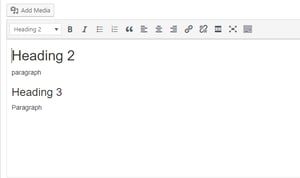
← There is a text styling option where you can set a heading or paragraph style.
It is common to use this feature as a way to style text, but that it not what it is for. It may not seem like a big deal, but here’s why this can mess up your SEO:
Well, if you are using the heading settings (as pictured above) as a way to style your content instead of as a way to tell search engine crawlers what the page is about, you can end up with something that looks like this:
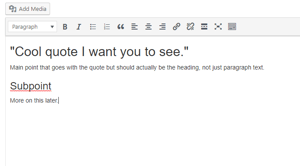
← It is common for people to want to make a cool quote bigger, so they use a bigger heading, even though it should just be paragraph text made larger.
But now search crawlers don’t associate your subpoint with the real parent point as well.

The content on your page is another important SEO and ranking factor. Google and other search engines like to see that your page has value and relevance to the keywords you’re targeting. Search Engines want their users to be satisfied when they produce a search term and click on a result in the search engine. This means your page needs to have added value that answers users questions.
For Google to rank your page as a quality page, and therefore bumping up your Google ranking status, you should write at least 300 words on your page. Any page with less than 300 words will be seen by Google as not useful for users and therefore Google won’t rank the page as high. For smaller pages try to shoot for between 500 and 700 words. For longer more encompassing pages strive for 1,000 to 2,000 words. The more words on the page, the more useful Google deems your content and your ranking potential increases.
Another essential aspect of page content is relevance and keywords. How relevant to a certain keyword is your page? Do you provide quality information on the subject or is your page about something completely different than your keywords in your headings, page title and meta description? Google will notice and doc your rankings if your page isn’t consistent with relevant content. You may be tempted to use a variety of keywords related to a topic but Google sees this as keyword stuffing and your page will be penalized. You should use keyword variations throughout your text so Google knows that you’re staying on the same or similar subject.
Related resource - Topic Clusters: A Simpler Way for Remodelers to Think About Content and SEO
Everything related to the way your website or webpage ranks in Google boils down to it’s overall user friendliness. There is a lot of debate about which ranking factors matter the most to move the needle for your SEO, but when you look behind the shouting and pointing of fingers, you see that at the end of the day, Google rewards websites that engage their users best by providing quality content and answers to searchers questions.
So should you care about:
YES, because everything in the list above is directly reflective of your user experience. Make sure everything on your website is for the benefit of your user, because that will help your SEO most.
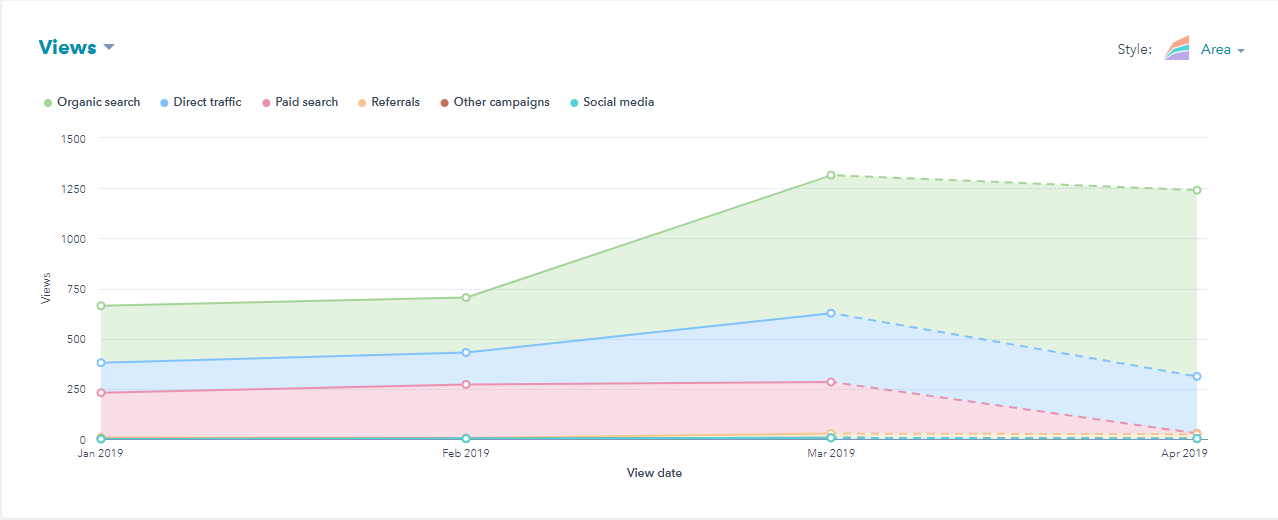
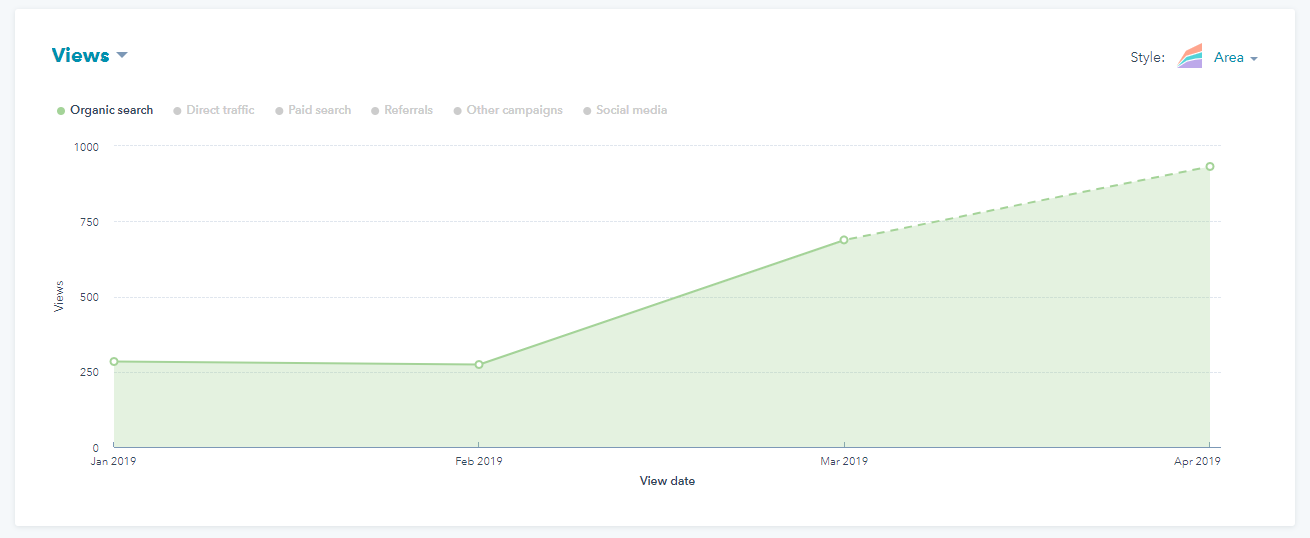

Keyword targeting is an important way to keep your web pages relevant, and it’s mostly a matter of making sure the phrases your target audience is searching online are the phrases you use in your web content.
Some people say keyword targeting is dead, but rather, it has evolved. Remember how everything about your website should be focused on improving user experience? The same principle applies here.
The keywords and key phrases you target should be based on how you can provide value to a researcher who finds your page. Keyword stuffing — putting as many keywords on a page as you can — is a big NO-NO. But understanding the “Why?” behind your target audience’s search queries and crafting quality content to answer their questions is what you should try to accomplish.
So, if you aren’t genuinely answering questions about “bathroom remodeling costs” on a page, don’t try to keyword stuff those terms just to rank for that term or phrase. But, if you do have a page about “bathroom remodeling costs,” by all means harness that potential, because your users care about that info, and it will help them.
Related Resource: How to Use the Right Keywords in Your Home Builder Marketing
There are lots of ways to figure out what people are searching for. You can use
and other keyword research tools, but that’s not it. There are several creative ways to ensure you’re answering the user intent of search queries. This includes answering the questions you find in
For example, when people search for the phrase “build versus buy” in Google, you’ll see a “people also ask” section with dropdown SERP answers to questions Google has deemed related to the “build versus buy” search query.
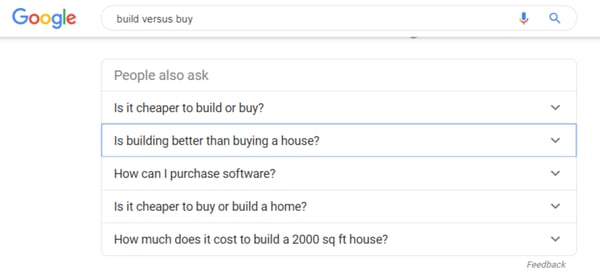
This means that if you are writing a blog on building versus buying a home in Virginia, for example, including answers to these “people also ask” questions boosts your potential to rank well for that blog.
Links are important for Google to determine the value of your web pages, and also function by helping your own pages boost each other's value.
Internal linking is the SEO technique whereby you include links from one piece of your content to another relevant piece of content and vice versa.
This might seem like unnecessary effort, but it will boost your ranking potential for a couple of reasons:
If you’re a localized home builder or remodeler, you’ll want to make sure you’re targeting the people in your area who can utilize your services. In this section we explore some simple tactics you can use to better target the area you serve.
Location specificity is vital for local home builders and remodelers. If you’re not targeting the entire nation, you don’t want to use generalized keywords that will attract customers in the wrong locations. One way to ensure you’re hitting the right target audience is to ensure your SEO NAPs (Name, Address, and Phone Number) are correct and consistent throughout the web. NAPs can become inconsistent when your business moves, changes phone numbers, changes names or typing the name or address differently in different places across the web.
NAPs are important to your ranking factors because they reflect your online authority. If your NAPs are inconsistent, your authority is diminished and your business appears lower on search results, even if your content is exactly what a user is searching for.
It’s easy to have inconsistencies in your NAPs because Google takes into account every mention of your business online. From your website to your social accounts and third party directories Google crawls everything. Even NAP discrepancies as seemingly trivial as “South 21st Street” versus “S. 21st Street” will negatively affect your authority and ranking.
Incorrect NAPs can also be frustrating for potential customers and lose you business if the user can’t get ahold of you because of outdated, incorrect information.
So, should you be checking your NAPs? If your business is less than a year old, and you’ve never moved locations or changed names or changed any other aspect of your business, then you’re probably doing OK. However, if your business is older, you’ve likely changed at least one aspect of your business and it would be a good idea to check on your NAPs.
Here’s how you can do a quick search to see if you need to clean up your listings.

Another way to ensure you’re attracting the right people is to use location specific keyword targeting. All this means is adding specific locations to top keywords so users in and around those areas can find your content more easily.
Target local keywords and locations by taking a strategic approach to your webpages. Think about the kind of topics potential customers would search for and present that information in a way your audience would likely search on Google. For example, if your clients frequently ask you questions about the timeline of building or remodeling a house, try writing a blog titled, “How Long Will My Kitchen Remodel Take in [insert city name here]?”. Using the question format for the title of the blog will help users find your information as that is how they will search for answers to their questions. For more local keyword targeting blog opportunities, take a look at 257 Effective Home Builder Blog Topic Ideas.
Google My Business is the latest and greatest social network that will positively impact your rankings in the Google search engine. Keeping your Google My Business Listing up to date with correct NAPs, photos, offers, posts, and reviews can mean the difference in where you rank on Google, especially against your competitors.
You should be updating your Google My Business listing weekly via the “Google Posts” section to include new photos, company news, special offers, and recent blogs. Be sure to leave personalized responses to reviews and update business info when applicable such as holiday hours or closures. Read more about perfecting your Google My Business Listing with our Complete Guide to Google My Business for Home Builders and Remodelers.
Now you know the importance of SEO, but you still don't have a lot of the know-how – or maybe you just don't have enough time to worry about SEO. If you decide to hire somebody to do your SEO for your company, make sure you're asking all the right questions:

This question will help you get to know the company’s process, go-to strategies, and see first hand the results their clients have had. Remember, your company is unique so you can expect your results to be unique to your company Here are a couple of Builder Funnel’s own case studies:
The answer to this question, like many SEO questions, will vary depending on your business, location, competitors and several other factors. However, the company you plan to hire, should know through research, which keywords bring in the best search volume. Frequently, we see a high search volume for anything price or cost related, but there will be several others based on your specific services and location that will be high ranking potential keywords.
Again, this depends on many factors including, your website’s age and domain authority the content on your website, how many competitors are in your area, the SEO practices they have in place, and other SEO factors. When you’re vetting potential companies to do your SEO, they should talk about auditing your competitors online presence to be able to give you a better idea of what it will take to beat out your competitors.
In all transparency, ranking #1 on Google can never be guaranteed and is most easily answered on an individual basis. Your ability to climb the Google ladder depends on which keywords you’re looking to rank for and the digital footprint of your competitors Your timeline will also depend on where you are currently ranking. If you’re on the second page of Google, it will be a much quicker ride to #1 than if you’re on the 3rd, 4th or 5th pages of Google. Your prospective SEO company should be able to give you a better estimate.
Most people want to rank for every keyword, but that’s not practical. Make sure the company you hire has a firm grasp on what’s possible and what may be too far fetched. Be sure the keywords they suggest you rank for support the search intent of your target audience who would be searching for services you offer. The company should be able to give you a good list of ranking potential keywords and how difficult it will be to rank for each one.
There should be strategies and tactics in place by a company in order to help your website SEO and search ranking potential. At Builder Funnel, we use a variety of methods depending on your business goals to create the best results for you. Here are some examples of tactics we use in our SEO practices:
SEO is important in any industry, but it’s especially important for home builders and remodelers who are looking to gain a competitive advantage on search engines such as Google. Remember the three main factors to implement in your SEO plan: Technical SEO, Keyword Targeted SEO and Local SEO.
If you need to boost your SEO game, but just don’t have the time, we can help. Schedule a call with our president Spencer Powell to see what we can do for your home building or remodeling business.